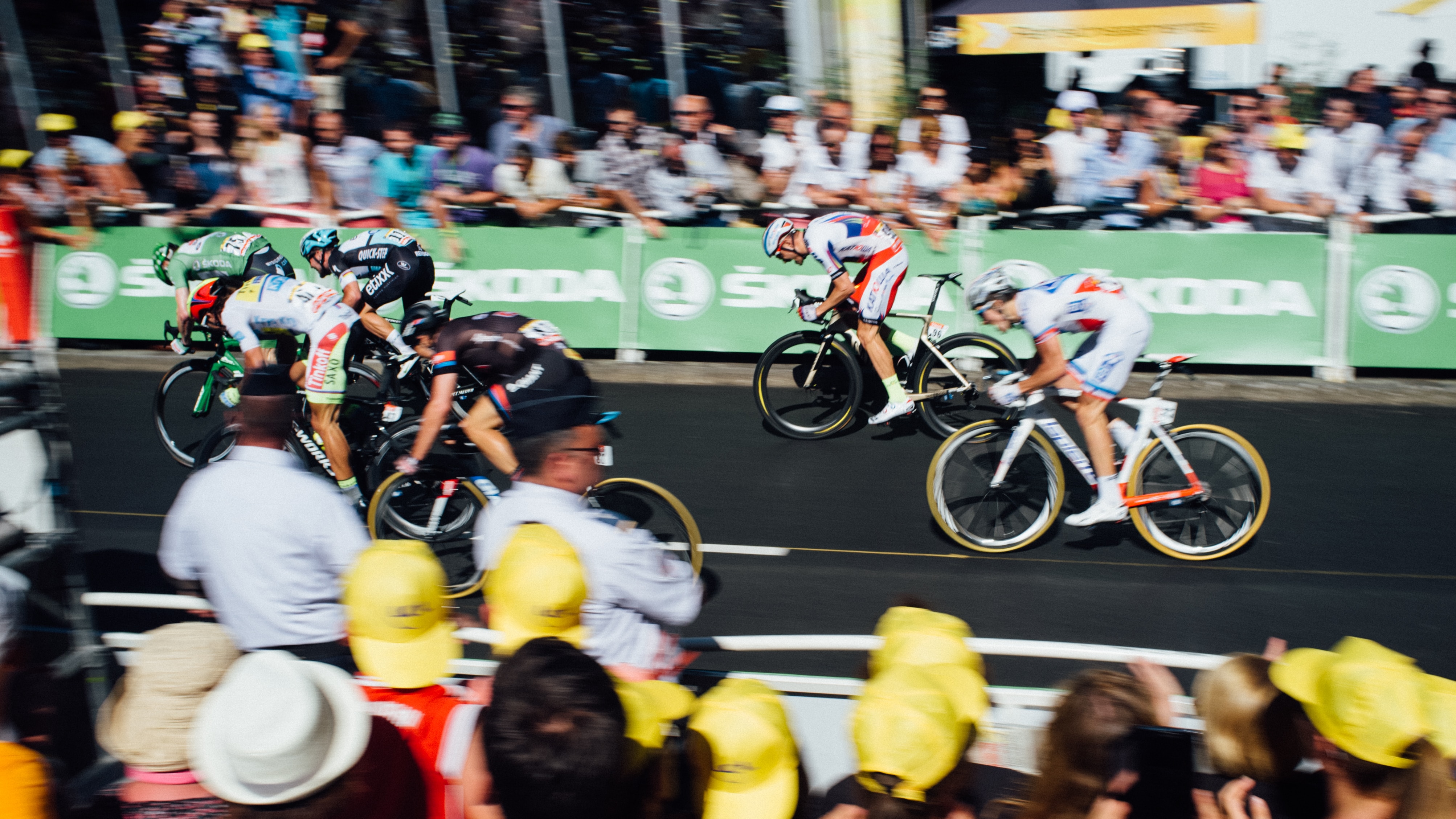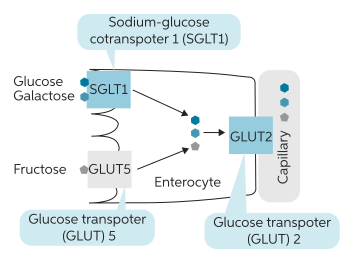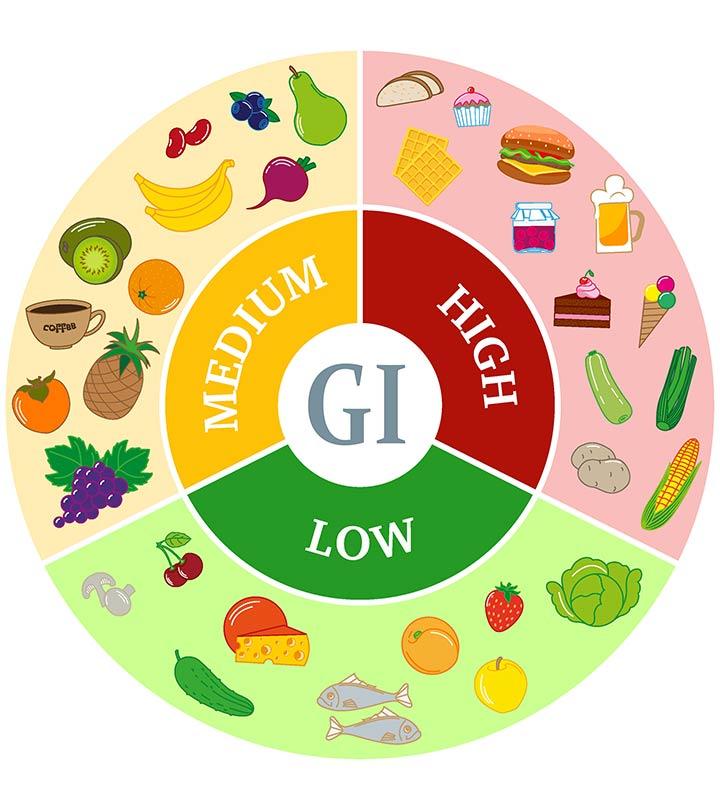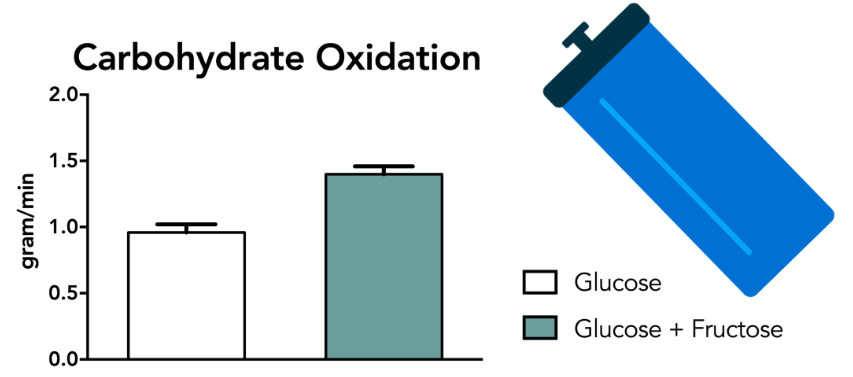July 10, 2023 by Fuel & Fortify
Carb Pathways to Peak Performance: Glucose, Fructose and Maltodextrin

Carbohydrates play a crucial role in providing the fuel necessary to sustain prolonged efforts. However, not all carbohydrates are created equal and are utilised in different ways. In this exploration, we delve into the intricate world of carbohydrate absorption and its impact on endurance performance.
Let’s break down the big three.
Glucose
Glucose is a simple sugar that can be directly absorbed by the small intestine. It utilises a sodium-dependent active transport mechanism, known as the sodium-glucose co-transporter 1 (SGLT1), to enter what’s called the enterocyte (cells of the intestinal lining). The rapid absorption of glucose is one of the reasons it provides quick energy during exercise.
Fructose
Fructose, unlike glucose, is primarily absorbed via facilitated diffusion through another transporter called GLUT5. Once absorbed, fructose enters the liver, where it can be converted into glucose or stored as glycogen. The absorption of fructose can be slower compared to glucose, which makes it a valuable option for providing sustained energy during prolonged endurance activities.
Maltodextrin
Maltodextrin is a complex carbohydrate composed of chains of glucose molecules linked together—also known as a glucose polymer. Due to its composition, maltodextrin is broken down into glucose molecules during digestion. As a result, it uses the same sodium-dependent active transport mechanism (SGLT1) as glucose for absorption through the intestinal wall.

Source: Chegg
GLUT2 is a bidirectional transporter found in the cells of the small intestine and the liver. It plays a role in moving glucose and fructose out of the enterocyte and into the bloodstream.
Fast and Slow
“Fast carbs” and “slow carbs” are used to describe the speed at which carbohydrates are digested and their resulting impact on blood sugar levels. These concepts are closely related to the Glycemic Index (GI), which quantifies this effect by assigning numerical values to different carbohydrate-containing foods. When a piece of food is of a certain GI—we’re referring to a scale that measures how quickly that food raises blood sugar levels after consumption. High GI—think white bread or cereals. Low GI—greek yoghurt, lentils.

“Gastrointestinal (GI) distress” is every endurance athlete’s worst nightmare—really meaning a range of uncomfortable or painful symptoms that can affect the gastrointestinal tract. These symptoms can include nausea, vomiting, bloating, cramping, diarrhea. It’s ugly stuff.
All of this happens if these transporters become saturated when certain types of carbohydrates are consumed in excessive amounts.
So what are the upper thresholds of these exogenous (i.e. consumed) CHO sources?
| Carbohydrate | Maximum Oxidation Rate (grams/minute) |
|---|---|
| Glucose | 1.0 - 1.1 |
| Fructose | 0.5 - 0.6 |
| Maltodextrin | Varies (around 1.0) |

Source: Trommelen et al.
So how do we maximise our CHO intake on race day for performance and reduce our risk to GI distress at the same time?
Several studies have looked at the ingestion of multi-transportable carbohydrates relative to single CHO compounds.
Recall above that the intestinal transporter for fructose (GLUT5) differs from that of glucose and maltodextrin (SGLT1). These two non-competitive absorption systems mean that athletes can ingest a composition of fast and slow carbohydrates for those events going beyond 2 hours.
One key study (O’Brien et al.) observed that a drink containing a 0.8 ratio of fructose–maltodextrin resulted in a higher exogenous CHO oxidation efficiency—capped at a total of 90g/hr. This was favoured over other ratios of 0.5 and 1.2. And many performance nutrition brands have built products off this ‘golden’ ratio.
And as for the performance gain? The rise in CHO oxidation efficiency was associated with an increased mean sprint power output in the cyclists that participated in the study.
Further studies (Podlogar et al.) have looked at pushing the upper bounds of CHO consumption to an astonishing 120g/hr. They and others have concluded that more isn’t always better and it really comes to the individual’s tolerance. Some of which is gut-trainable, but oftentimes it’s just genetics.
And despite the potential upside of increased exogenous CHO oxidation rates when consuming a higher amount of carbs at those 120g/hr levels, it was found that there was “no sparing of endogenous CHO stores” (i.e. stored glycogen in the liver and muscles) when compared with 90g/hr. So if it’s seen to not really preserve those endogenous stores, you have to ask yourself the question—is it really worth the risk? And there most definitely is an increased risk of GI distress when taking onboard more CHO.
Maltodextrin’s Osmolarity and Isotonic Advantage Over Glucose
So with a goal intake of 90g/hr, let’s look into why a maltodextrin-based formula might be preferred here.
When it comes to maltodextrin, its osmolarity is an important factor. But why?
Firstly, what do we mean by osmolarity?
Osmolarity is a measure of how concentrated a solution is, based on the number of particles (ions, molecules) dissolved in it. Higher osmolarity means a higher concentration of particles, lower osmolarity meaning low concentration.
When osmolarity is lower, like in a drink containing maltodextrin, it’s easier for your stomach to empty its contents into the intestines. This faster gastric emptying means less discomfort in your stomach and allows the carbohydrates from the drink to reach your bloodstream more rapidly through absorption in the small intestine.
And when rapid gastric emptying is desired—ideally we want to reach for something that is isotonic.
When something is isotonic it has the same osmolarity as bodily fluids—like blood. When we package maltodextrin and glucose as isotonic solutions into bars and drinks, we want them to be quickly absorbed and help maintain hydration and energy levels during exercise.
The key takeaway in all of this—maltodextrin becomes isotonic when you mix 150g of it with 500ml of water, while glucose becomes isotonic with just 26g in the same amount. So you can pack in six times the grams into a solution with maltodextrin to hit that isotonic “sweet spot”.
Think back to your races—how often would you be getting half a litre in? For glucose, you’re only getting a meager 26 gram return!
Our energy gels will typically be comprised of some maltodextrin composition, so as we can pack more carbs in a 60ml diluted gel.
In short, you’re getting way more bang for your buck in terms of caloric density when maltodextrin comes into play.
Summary
In pursuit of peak performance, it’s essential to find the right balance between CHO intake and minimising potential discomfort. The latter usually spells the end of anyone’s race. By understanding these nuances of carbohydrate absorption, athletes can make informed choices to fuel their bodies effectively. But none of this really matters if athletes decide to trial any new nutrition plan on race day.
The big day is not the time to experiment with unfamiliar foods or strategies—any assessment of tolerances needs to be worked out prior to ensure that you’re well-prepared physically and mentally to tackle the challenges of the race without the added stress of uncertainty.
Happy Fuelling!